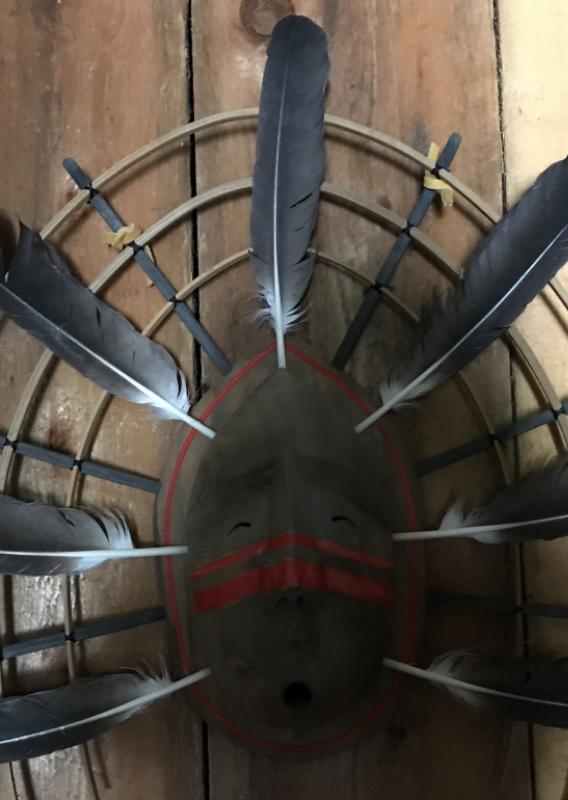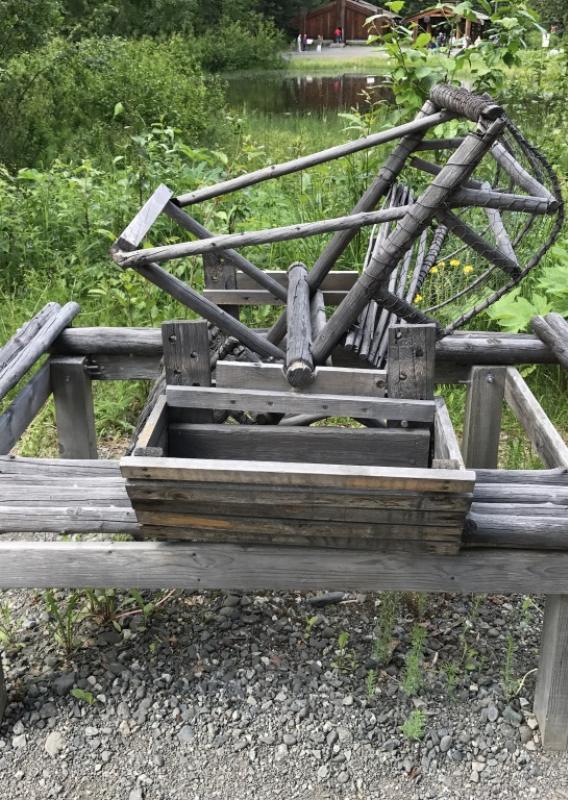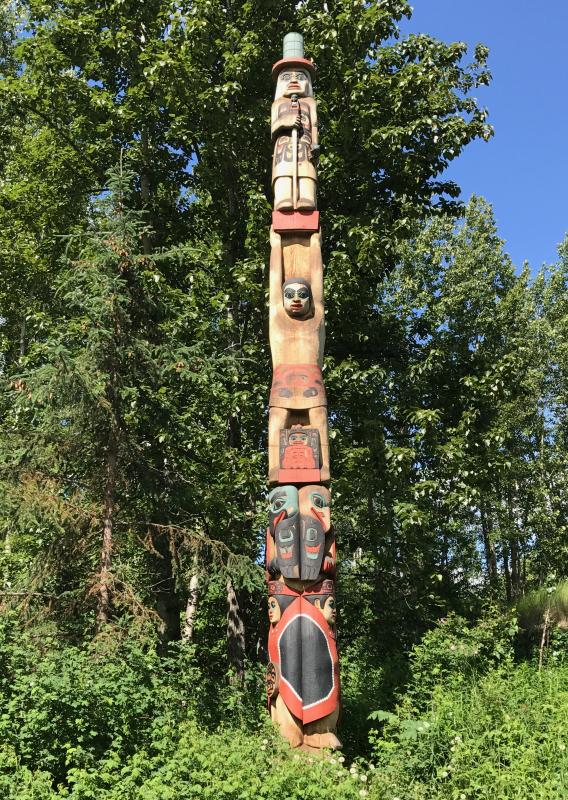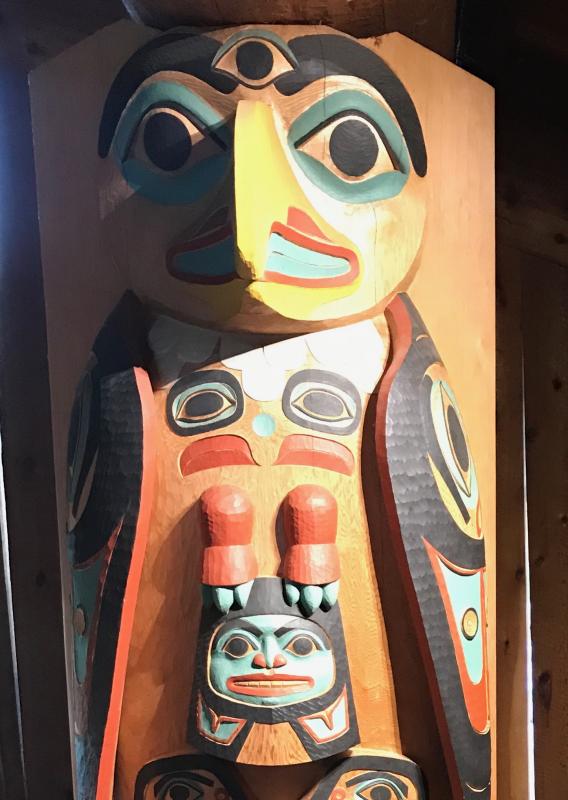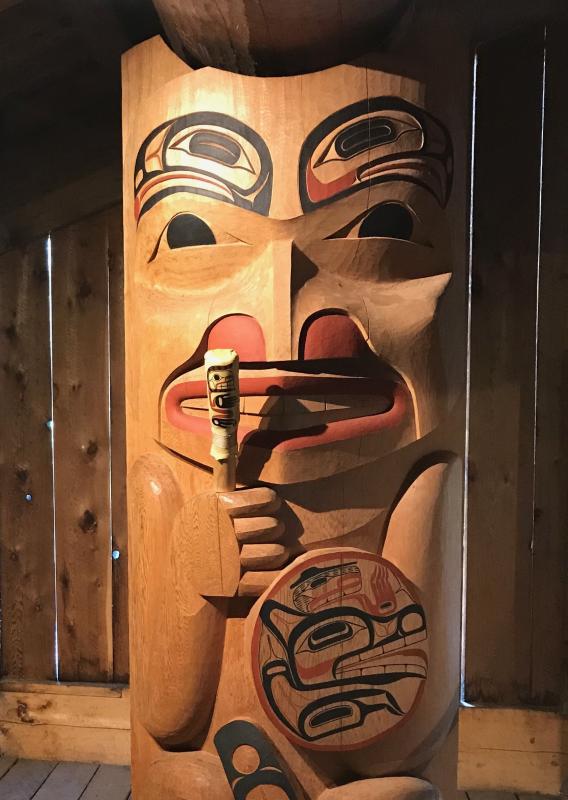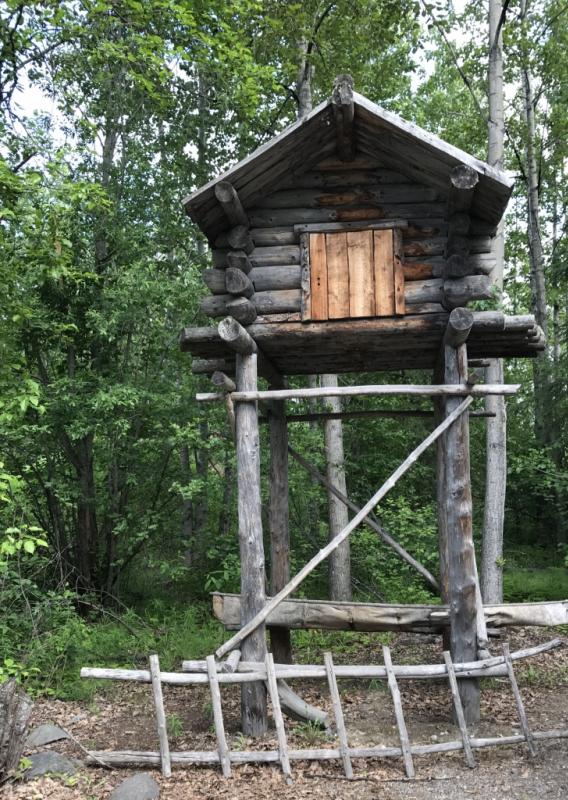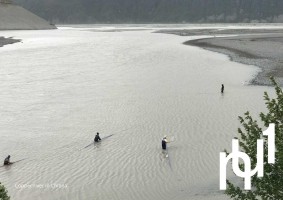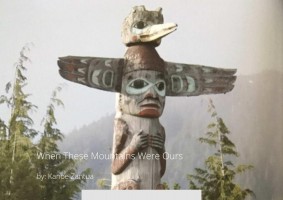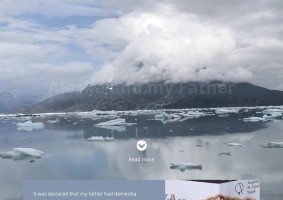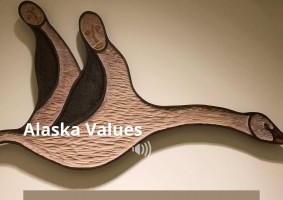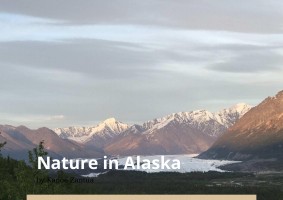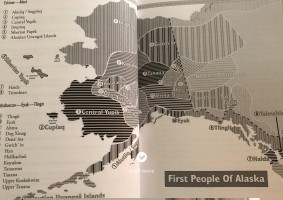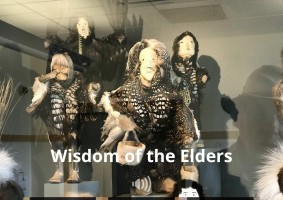The First Native People
Yup’ik and Cup’ik people
The land of the Yup’ik and Cup’ik people lies along a low-lying delta covered by numerous lakes and streams and where three major rivers, the Yukon, Kuskokwim an Nushagak, flow out to the Bering Sea. The land is mainly treeless tundra with mountains and hills scattered throughout with Nunivak and Nelson Island situated to the west.
Along the coast the Yup’ik and Cup’ik mainly subsisted on marine mammals, fish and other resources provided by the ocean as well as berries and plants. Inland they depended on moose and caribou, salmon and fresh water fish for subsistence.
Their lives were dictated by the seasonal cycles. They migrated closer to the ocean in spring to hunt sea mammals and the relocated to summer camps along rivers to harvest salmon. In the fall they traveled inland to trap mammals and cathc fresh water fish.
During the winter months they settled in winter villages where they took part in ceremonies which included dance singing and feasting to honor their way of life.
the Yup’ik an Cup’ik people beleive that respecting all things by treating them with care will elicit gratitude and ensure the availability of resources. Following the ancestral teaching of their elders will result in long meaningful life. Sharing their catch of animals and fish will guarantee future succes in hunting and gathering.
Woman and children lived in the women’s family house: The Ena. In the women had many responsibilitys including taking care of children sewing clothing for the family, and making containers of grass and skin used to store and transport food. They prepared food for the men and boys who lived and worked in the qasgiq.
The qusgiq is both the men’s house and a community centre. Boys old enough to leave their mother joined male relatives in the qasgiq, where together they worked, ate, bathed, and slept. The older males taught younger ones how to be Yup’ik or Cup’ik men. Mothers and wives brought them food, and joined in the evening singing, dancing and festive events.
Twice as large as the winter houses in which women and girls lived the qasgiq nevertheless shared the same architectural features a wooden post and beam structure made of driftwood and covered with grass and sod. Bearded seal or walrus intestine provided a removable ‘skylight’ window.
The qasgiq was the place where the boys, men and the elders had their formal education about survival and all the other skills and knowledge a man should know about the Yup’ik and Cup’ik society
Iñupiaq and St. Lawrence Island Yupik People
Their life is woven into a complex society based on subsistence hunting of sea mammals and land animals and the gathering of resources available on the land and sea.
Their region is vast and varied on land, the territory stretches north from Unalakleet following the coast to the Canadian border and beyond to Greenland to the east, while to the west it includes the islands of Big and Little Diomede, King Island and St. Lawrence Island.
This tribe lived in a severe Artic climate. To earn a living they drew ingenuity, ability and skill to make use of the resources in this unique environment. Cooperation was critical to their very survival. People worked together to hunt and gather. They formed whaling crews and hunted migrating caribou.
People worked in groups related by kinship and marriage from a few to 50 family households. Each household contained three to four generations led by a senior hunter and his wife. He and his wife were responsible for distributing the food that his crew harvested.
Unanga & Alutiiq (Sugpiaq)
Sea Faring People of the North Pacific Rim
They live on the North Pacific rim, harvesting the bounty of the world’s largest ocean. Long ago the rich sea life avaiable year round enabled them to develop complex societies with hereditary classes.
They are maritime people. The sea shaped their cultures for thousands of years. The sea supplied an abundance of resources which sustained their people. It was a highway, linking villages scattered over thousands of miles, from the forests of Prince William Sound to the volcanic islands of the Aleutian chain and Pribilof Islands. The sea shaped their climate which is more temperate than other parts of Alaska but with ever present winds.
Skillful women stiched unsurpassed waterproof clothing and translucent windows and gathered beach grass to weave the finest baskets.
Unangax and Alutiiq men were expert mariners. A hunter did not hestitate to hunt large whales, armed with highly technical kayaks and poison-tipped harpoons.
Their people were extremely knowledgeable in human anatomy and procedures. Practtioners successfully performed brain surgery, amputations and other advanced medical procedures. They are the only Alaska Natives to practice human mummification.
Men hunted a variety of birds with spears, nooses, bolas, traps, and nets. Men and boys als cimbed down cliffs to collect bird eggs. Birds were often used for food, clothing and ceremonial purposes.
Fishing skills involved the use of composite and crcle hooks, dip nets, spears and weirs. Womand, children and elders worked the streams, gathered sea life from the intertidal zones and collected plants, roots and berries.
In the eastern part of the region, caribou and mountain goats were important food sources.
Eyak, Tlingit, Haida and Tsimshian People
These tribes who live by the sea and by the land share a common and similar Northwest Coast Culture with inportant differences in language and clan systems. The people of the Northwest Coast shared a remarkably rich culture. Food-fish game, wild fruits and vegetables - was plentiful. They developed a rich art and oral tradition as well as a complex legal and social system based upon clans.
Their territory- from the Copper River Delta to the Southeast Panhandle- is a temperate rain forest, an environment that produces many tall and massive trees. Wood was the most important commodity for us. Houses totem poles, daily utensils, storage and cooking boxes, transportation, ceremonial objects and clothes all were made of wood and wood products.
The original homeland of the Tsimshian was on the Nass and Skeena Rivers in British Columbia Canada. Ooligan- a source of oil for home use and trade alaong the ‘Grease Trail’- were particularly prized from the Nass
